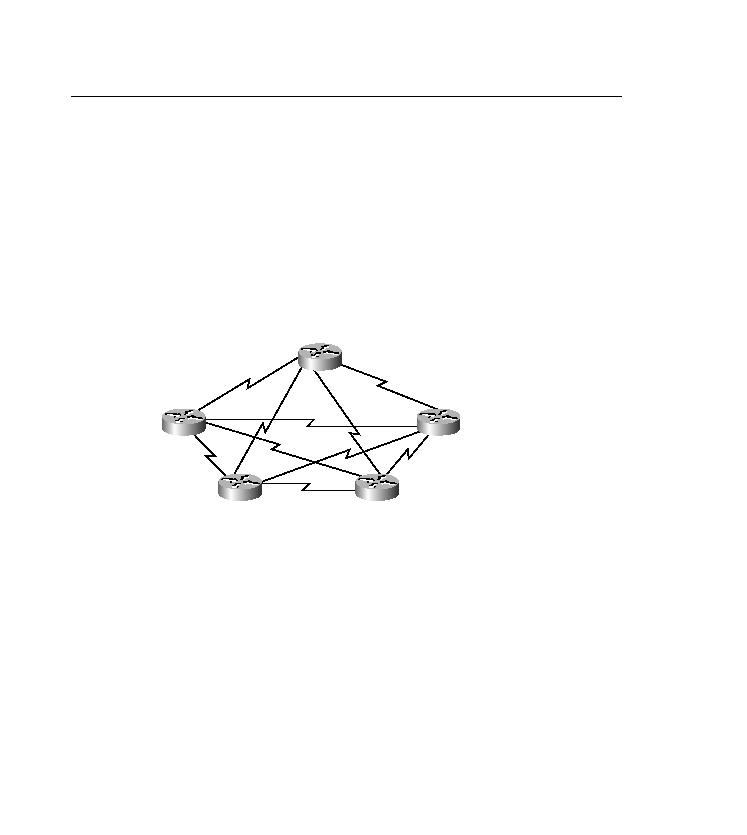
most important goal of the WAN design. Reliability relates to accuracy, low error rates, and
network stability. In addition, reliability describes the amount of time between failures and how
quickly the network can recover from an outage. A WAN can be designed with additional links
and equipment to maximize redundancy. In a perfect-world design vacuum, that would be the
ultimate answer. In the real world, where high WAN costs are usually a constraint, the needs for
redundancy must be weighed against the desire to have a cost-effective network that delivers a
high return on investment.
routers in the network (see Figure 9-4).
expensive to implement, a full mesh is usually reserved for network backbones. As a cost-
effective compromise, companies elect to use a hub-and-spoke design. A hub and spoke can
provide connectivity. However, there is usually a single point of failure (the hub site) that
might result in connectivity loss between the sites. An example of a hub and spoke is shown in
Figure 9-5.